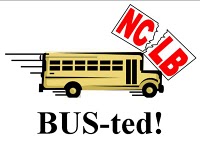
I provide coaching for public schools that work extremely hard to bring up their AYP (overall test scores) by focusing on motivating students to want to learn. I have been working with schools since the early 90s. I realized early in 2003 that NCLB (No Child Left Behind) was set up for public schools to fail.
No matter what a school did — they could not meet the goals. You see – many students don’t really care how they do on the test because they don’t see how this impacts them. The test is more about how the school and teachers are doing. Teachers are evaluated on the scores even though they are told they are not. Now I do see some schools taking the data to differentiate instruction but it still is teaching to the test. Teachers burn out. Principals are reassigned. Schools close. Communities suffer. (Survey on issues surrounding NCLB authorization)
Some schools are now becoming creative by bringing back project-based learning, inquiry, creativity, but many of the good teachers that taught like this left or retired. New teachers who are content experts who go through a few weeks of training are thrown in a classroom with little classroom management or even an idea of what project-based learning (PBL) is. They stay 2 years to forgive their loans. Actually I don’t blame them. Teaching is hard work. It sounds pretty neat for people who want to make a difference and are told they would be a great teacher. It’s just that teaching is different since NCLB was put in place.
With NCLB, for the last 11 years, a whole generation of students and teachers only know to teach to the test. It’s going to take some work to change these beliefs and move to a more student-centered model. It’s supposed to be all about our kids — right? Read about Virginia and NCLB
Making teachers accountable based on test scores alone hasn’t been working. There are ways to create a team (parent, teacher, child) to monitor learning progress. The Reggio Emillia Approach designed in Italy after World War II is centered around the pre-school child where the teacher monitors progress, guides the learning, and brings in the parent and the learning environment as support. This is being looked at closely in the US as an approach for K-12.
To really make a difference in a child’s life, there needs to be a smaller teacher to student ratio, time for reflection, group and individual work, hands-on activities, problem-solving, learning to question, etc. Some schools are starting early with students as part of an advisory group – they keep the same teacher or advisor through their elementary years. This is what they do in Finland. Teachers need more collaborative time to plan and learn from each other.
Right now teachers are barely keeping their heads above water – hoping to cover the curriculum. Other countries have found that if you teach students to question, be critical thinkers, they don’t need to be spoon-fed all the information. They just need to learn how to find the information themselves, analyze it and synthesize it in their own words. It is a matter of going deeper (Depth not Breadth). Teach them how to fish instead of fishing for them. If they understand how to think critically, ask the right questions, be creative and innovative, use the appropriate tools for the task at hand, then they can compete in this global marketplace. Not all students are college-bound. Maybe we need to rethink learning goals and what is appropriate for each child. School is just starting and we can make a difference.
This is a critical time and we don’t want to leave any of our children behind.


